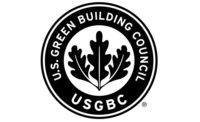
When it comes to production green building, Utah’s Garbett Homes stands out for both its Home Energy Rating System specific green marketing and the affordability of its standard green features.
The epiphany for Garbett came three years ago when its marketing analysis and projections told the company that first-time home-buyers were the niche that would help insulate it from downward pressure on the broader housing market. Garbett also decided that standard money-saving green features would be the differentiating factor between itself and similarly-priced competitors.
“With first-time buyers, they’re coming out of rental units and with rates where they are, they’re able to get into a brand new home with little or no money down for essentially the same monthly payment as rent,” says Rene Oehlerking, director of marketing at Garbett Homes.
“What’s really been a motivating factor for them are the lower utility bills. When the average monthly bill in the Salt Lake City region is around $250 to $300 for power and gas, we’re able to bring them into a home where they’re spending about $20 a month-that’s a car payment they’re saving each month right there.”
SEE IT BEFORE YOU BUY IT
Garbett builds about 300 homes a year, most priced in its sweet spot of $150,000 to $250,000. It plans to have all of its homes come with an energy rating under HERS 40. A very potent marketing tool for Garbett has been its ‘deconstruct’ models where customers are able to see the location and operation of efficient and sustainable products.


Before discovering EcoSeal, Garbett had been using open-cell spray foam for sealing and insulation. “It gave us a nice tight building envelope,” Oehlerking says, “but we found that when we combined it with blown-in fiberglass and a product like EcoSeal, we could actually get improved R value in our interior wall cavity. The result is standard R 44 insulation-that’s at $5,000 less than using the spray foam alone that gave us R 22 or R 23.”
EcoSeal, with the ability to penetrate gaps as small as 1/16 inch, is used on Garbett’s sill plates, top plates and cracks and gaps in sheathing, while fiberglass BIBS applications are used with 2x6 construction. For Garbett, this solution and others like solar photovoltaic/thermal, geothermal and tankless hot water that are standard depending on the Garbett model, all come back to HERS and realizing that the lower the HERS score, the more environmentally-friendly the house will be. “And the less money you will spend on keeping the house running every month,” Oehlerking summarizes.
Garbett homes also have features like drip irrigation, low-flow plumbing fixtures and double-pane insulated windows.

Oehlerking says that using HERS scores for house purchases is naturally akin to the car industry’s ubiquitous MPG measurement. “Today, you wouldn’t think twice about looking for a car without checking miles per gallon,” he says. “We’re staking our future that HERS is going to be the ‘miles per gallon’ for homes. Comparatively, LEED is commercial and our buyers don’t know what LEED is. When they start researching it, it’s quite complicated,” he explains.
“The Garbett buyer sees the qualities of ‘being environmental’ and ‘saving money’ as one. Renewable is green, solar is green and the lower the HERS score-the greener the home and the less money will have to be spent operating it.”

In their adaption of EcoSeal, Garbett Homes’ estimator initially discovered the product at Greenbuild, later testing it out and installing it in the deconstruct model. “He was very impressed and loved the ease of application. He bought a $3,000 sprayer and started doing applications himself and was also able to instruct our superintendants on application. It’s a small rig and it’s nearly as simple as spray-painting,” says Oehlerking.



Report Abusive Comment